永福樱花园,福建省龙岩市, 中国 Yongfu cherry blossom garden in Longyan, Fujian, China (© SEN LI/Getty Images)
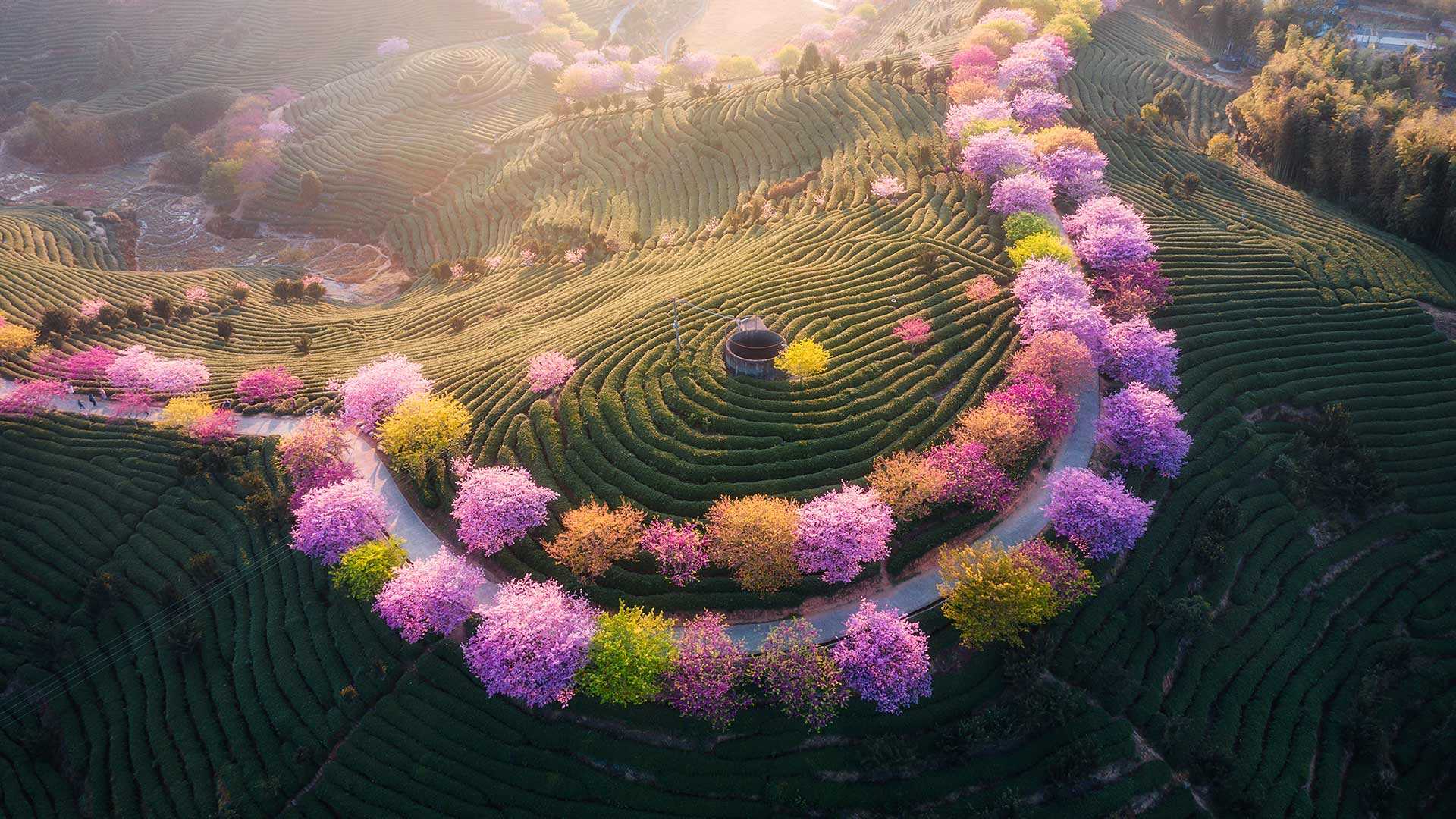
永福樱花园,福建省龙岩市, 中国 Yongfu cherry blossom garden in Longyan, Fujian, China (© SEN LI/Getty Images)
早春的气息 The Scent of Early Spring
永福樱花园,福建龙岩
立春,为二十四节气之首。立,是“开始”之意;春,代表着温暖、生长。立春标志着万物闭藏的冬季已过去,开始进入风和日暖、万物生长的春季。时至立春,在我国的北回归线(黄赤交角)及其以南一带,可明显感觉到早春的气息。虽然立春节气是从天文中划分的,但每年在立春节气后,人们开始有了一些踏春出游的活动。
Cherry blossom garden, Fujian
According to the traditional Chinese solar calendar, there are 24 solar terms in a year. Lichun is the first solar term. In China, Lichun means ‘Start of Spring’. The date of Lichun in 2022 is February 3rd. There are many traditions for this special day. There are many traditional activities on this special day to welcome spring, including making a spring ox, standing up eggs, and worshipping ancestors.
The start of Spring is only a prelude to spring for many northern regions. Everything has not yet left its frozen state in most of northern China around February 4th. Spring Outings to Appreciate Plum Blossoms Going out to parks or grasslands/hills to enjoy the spring views is another popular activity during the Lichun festival. People also eat food related to spring is called ‘biting spring’ in Chinese. Spring pancakes, spring rolls, or Spring vegetables are the most popular “spring foods” eaten on the day of Lichun.
天门洞,湖南天门山国家森林公园,中国 Heaven's Gate Cave in Tianmen Mountain National Park, China (© Shane P. White/Minden Pictures)
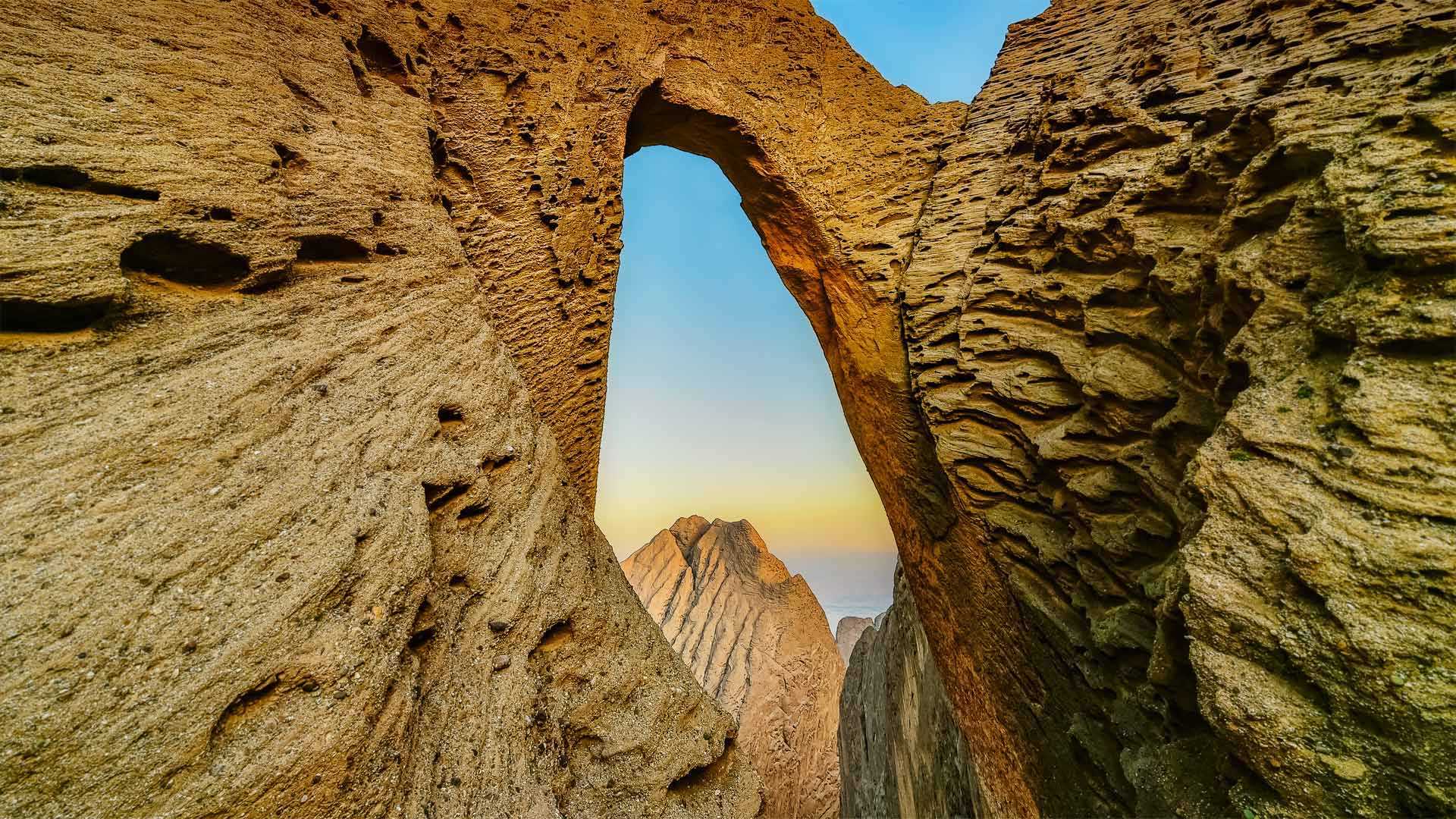
天门洞,湖南天门山国家森林公园,中国 Heaven's Gate Cave in Tianmen Mountain National Park, China (© Shane P. White/Minden Pictures)
通往天门的阶梯 Stairway to heaven
天门洞,湖南天门山国家森林公园
这张照片所呈现的石拱就是天门洞,它是湖南省北部最受欢迎的标志性景点之一,位于湖南天门山国家森林公园内。要想到达天门洞,你要么选择乘坐缆车,要么乘坐公共汽车穿过有九十九道弯的公路。下车后,你还需要步行登上陡峭的九百九十九级天梯。天门洞海拔高度有4100英尺,整个洞高440英尺、宽180英尺。尽管到达天门洞并非易事,但这趟行程绝对物超所值。
Heaven's Gate Cave, Tianmen Mountain National Park, China
The rock arch formation you're looking at today is Heaven's Gate Cave, a popular landmark in Hunan province, China. This busy tourist destination is located on Tianmen (Heaven's Gate) Mountain in Tianmen Mountain National Park. To reach the arch, you must either ride a cable car or take a bus up a twisty, winding road with 99 turns. (The number 9 represents eternity in Chinese numerology.) Once off the bus, you'll need to walk 999 steps up a 45-degree incline—a stairway to the heavens. It's no easy feat, but this is no ordinary cave. At an elevation of 4,100 feet, the arch is 440 feet high and 180 feet wide.
哈尔滨国际冰雪雕塑节,中国哈尔滨 Harbin International Ice and Snow Sculpture Festival, Harbin, China (© STR/AFP via Getty Images)
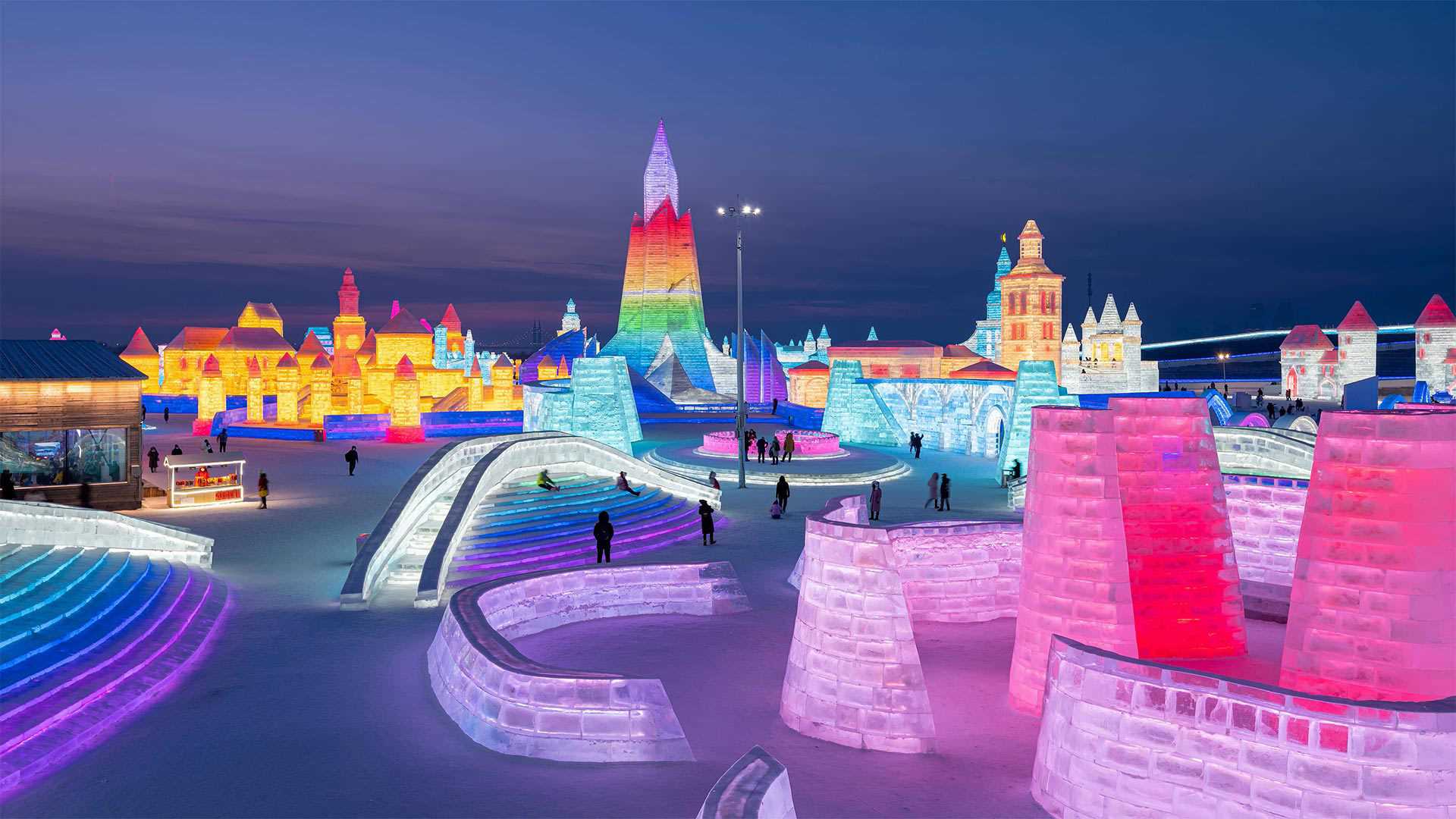
哈尔滨国际冰雪雕塑节,中国哈尔滨 Harbin International Ice and Snow Sculpture Festival, Harbin, China (© STR/AFP via Getty Images)
冰城 City of ice
中国哈尔滨国际冰雪雕塑节
位于中国黑龙江省的哈尔滨国际冰雪雕塑节将于今天开幕,届时将上演世界上规模最大的冰雪雕塑节所带来的壮观场面。该活动规模大、大胆、美丽,由近千名工人从附近的松花江收集的24万立方码冰块制成的2000多个冰雕。许多雕塑都用彩色灯光照亮,创造了一个充满活力、发光的冰世界。据估计,这些色彩斑斓的景点每年吸引超过1800万游客。这项活动将持续到2月下旬,还包括高山滑雪、上述松花江的冷水游泳,以及节日冰灯表演。
Harbin International Ice and Snow Sculpture Festival, China
The Harbin International Ice and Snow Sculpture Festival, in China's Heilongjiang province, begins today with all the spectacle and fanfare you'd expect from the world's largest festival of its kind. Big, bold, and beautiful, the event features more than 2,000 ice sculptures made from 240,000 cubic yards of ice collected by nearly a thousand workers from the nearby Songhua River. Many of the sculptures are illuminated with colored lights, creating a vibrant, glowing world of ice. It's estimated the colorful sights attract more than 18 million visitors each year. The event, which runs through late February, also features alpine skiing, cold water swimming in the aforementioned Songhua, as well as a festive ice lantern show.
庐山冬季美景,中国江西省 Beautiful winter landscape on Lushan, Jiangxi Province, China (© silkwayrain/Getty Images)
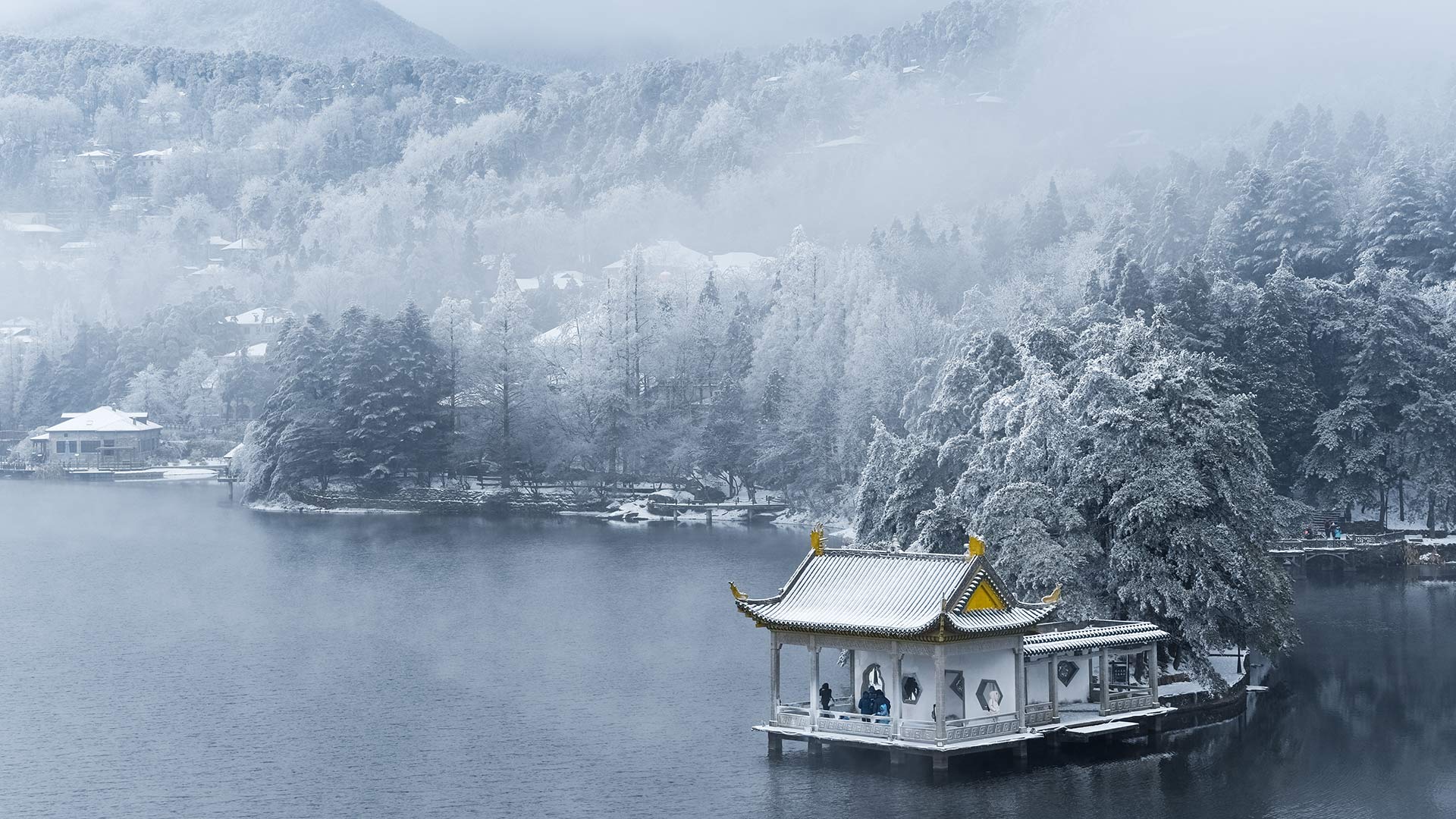
庐山冬季美景,中国江西省 Beautiful winter landscape on Lushan, Jiangxi Province, China (© silkwayrain/Getty Images)
冬天来了 The beginning of winter
庐山冬季景观
今年11月7日是“立冬”节。立冬也是农历冬季的第一个节气。冬季的开始从11月7日或8日持续到22日或23日,与春天开始、夏天开始和秋天开始一样,它代表着一个新季节的开始。
我们仍然保持着在立冬时吃美味食物的习俗。在中国南方,鸡、鸭、鱼和其他肉类是人们的首选;在中国北方,尤其是北京和天津,人们喜欢吃饺子,象征着季节的变化。
Winter landscape on Lushan
November 7 this year is the "Start of Winter" festival. The start of Winter is also the first solar term of winter in the lunar calendar. The start of Winter lasts from November 7th or 8th to the 22nd or 23rd, and like Spring Begins, Summer Begins, and Autumn Begins, it stands for the beginning of a new season.
We still keep this custom of eating delicious food at the Beginning of winter. In south China, chicken, duck, fish, and other meats are people's first choice; in north China, especially in Beijing and Tianjin, people would like to have Jiaozi (Dumpling), signifying the change of seasons.
中国桂林漓江国家公园的喀斯特山脉 Karst mountains in Guilin and Lijiang River National Park, China (© Sean Pavone/Alamy)
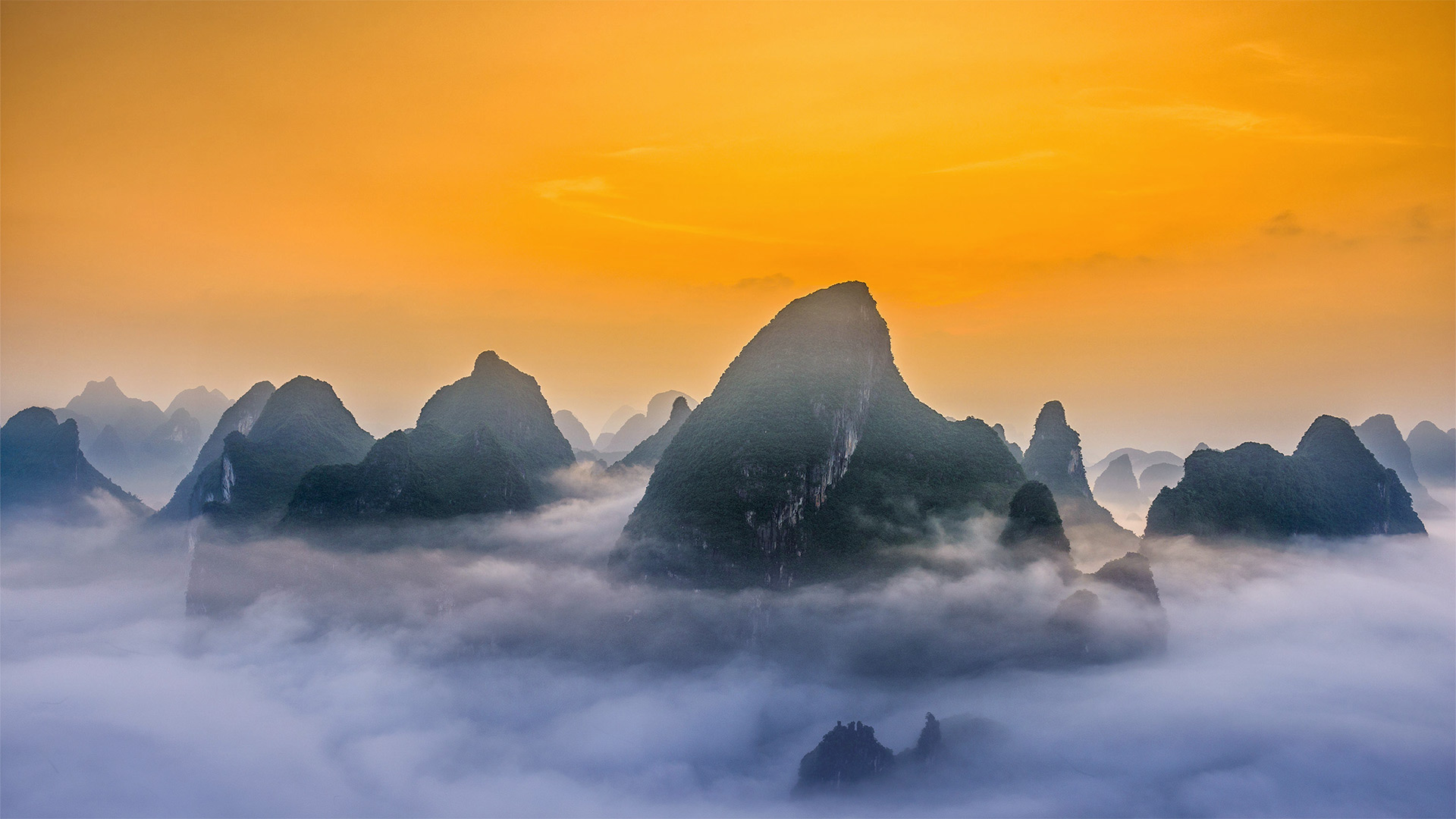
中国桂林漓江国家公园的喀斯特山脉 Karst mountains in Guilin and Lijiang River National Park, China (© Sean Pavone/Alamy)
中国桂林漓江国家公园
在这个迷人的地方,群山像龙牙一样刺穿雾霭。虽然它看起来像是一个幻想故事或科幻史诗的背景,但引人注目的桂林和漓江国家公园是非常真实的。
这个公园是中国最受欢迎的自然景点之一。丽江,或称漓江,流经该地区的石灰岩岩溶景观。正是喀斯特赋予了该地区不寻常的地质特征,尤其是覆盖着茂盛绿叶的锥形山丘,以及地表下的崎岖洞穴。
Guilin and Lijiang River National Park, China
Mountains pierce the mist like dragon's teeth in this enchanting location. Though it may look like the setting of a fantasy story or science fiction epic, the remarkable Guilin and Lijiang River National Park is quite real.
The park is one of the most popular natural attractions in China. The Lijiang, or Li River, flows through the region's limestone karst landscape. It's the karst that gives the area its unusual geologic features, notably the cone-like hills covered in lush greenery, but also the craggy caves below the surface.
黄山的日出,中国 The Mt. Huangshan sunrise, Anhui, China (© zhouyousifang/Getty Images)
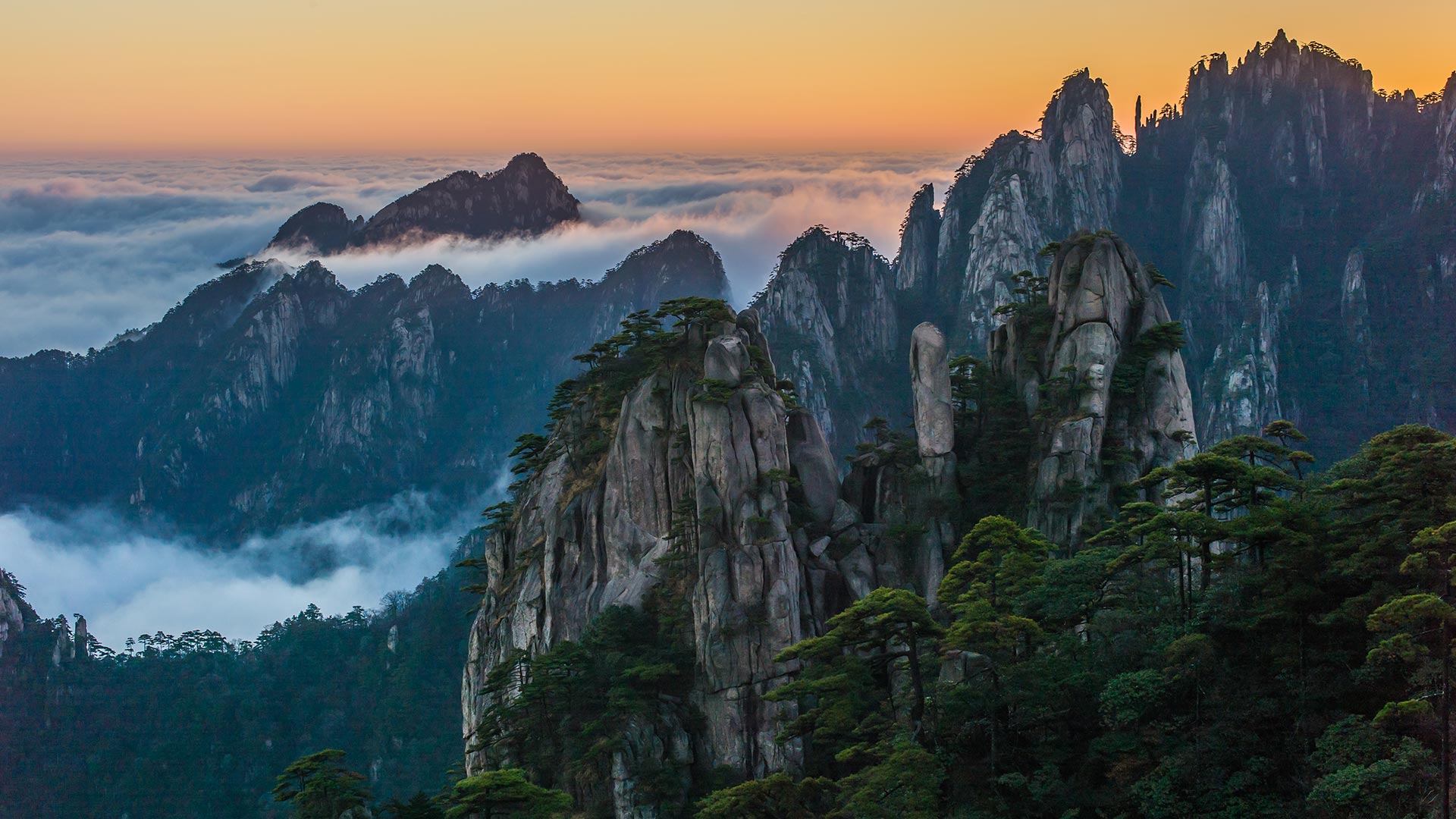
黄山的日出,中国 The Mt. Huangshan sunrise, Anhui, China (© zhouyousifang/Getty Images)
今天我们去爬山吧 Let ‘s climb the mountain today.
The Mt. Huangshan sunrise
Chongyang Festival is also called Double Ninth Festival. In Chinese, it is a day for people to eat Chongyang cake, drink chrysanthemum wine and climb mountains. Today we come to one of the most famous mountains in China.
Located in east China's Anhui Province, Mount Huangshan is renowned for its magnificent natural scenery including massive granitic boulders and ancient pine trees which are often further enhanced by cloud and mist effects. The property features numerous imposing peaks, many of which exceed an altitude of 1,000 meters, with the highest, the famous Lianhua Peak, reaching up to 1,864 meters.
黄山日出
重阳节也称重阳节。在中国,这是人们吃重阳饼、喝菊花酒和爬山的日子。今天我们来到中国最著名的山脉之一。
黄山位于中国东部的安徽省,以其壮丽的自然风光而闻名,其中包括巨大的花岗岩巨石和古老的松树,云雾效应往往会进一步增强这些景观。该地产拥有众多雄伟的山峰,其中许多山峰海拔超过1000米,其中最高的是著名的莲花峰,高达1864米。
山上的日出,河北蔚县 Mountain sunrise, yuxian, hebei, China (© zhao zhenhao/Getty Images)
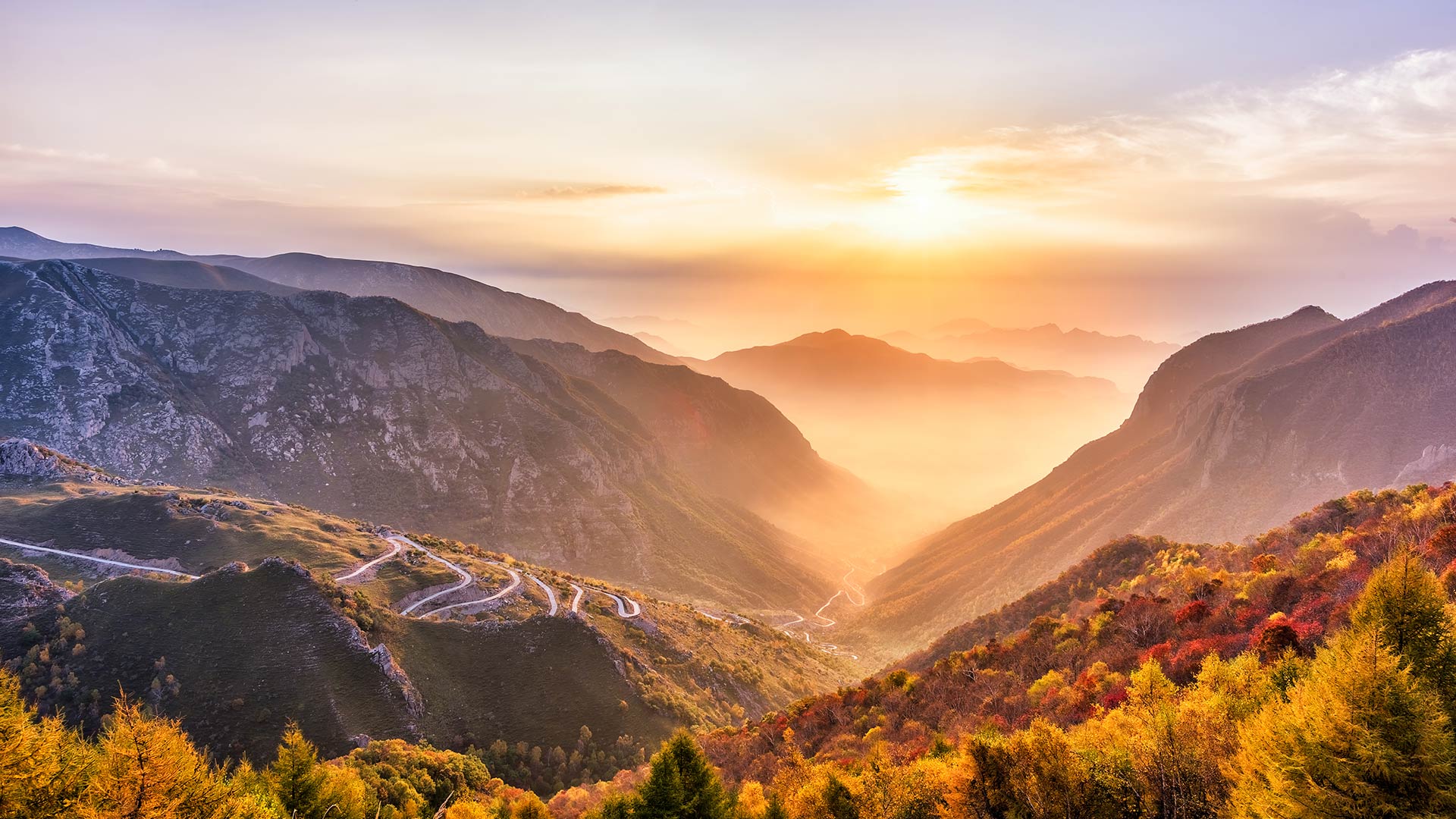
山上的日出,河北蔚县 Mountain sunrise, yuxian, hebei, China (© zhao zhenhao/Getty Images)
祖国生日快乐! Happy birthday to our motherland!
Mountain sunrise, yuxian, hebei
Yuxian is a national historical and cultural city, with 21 national key cultural relics under protection,35 Chinese traditional villages, two Chinese historical and cultural towns, two Chinese historical and cultural villages, one national 4A-level tourist attraction, and four national 3A-level tourist attractions.
In addition, the county is a hometown of folk art and paper-cutting, a center of research for the art of paper-cutting, and a leading folklore cultural tourism city, among other things.
河北蔚县日出山
蔚县是国家历史文化名城,有21处国家重点文物保护单位,35处中国传统村落,2处中国历史文化名镇,2处历史文化村,1处国家4A级旅游景区,4处国家3A级旅游景区。
此外,该县还是民间艺术和剪纸之乡、剪纸艺术研究中心、领先的民俗文化旅游城市等。
中秋之夜, 上海豫园 Shanghai Yu yuan gardens at night, mid-autumn (© Zyxeos30/Getty images)
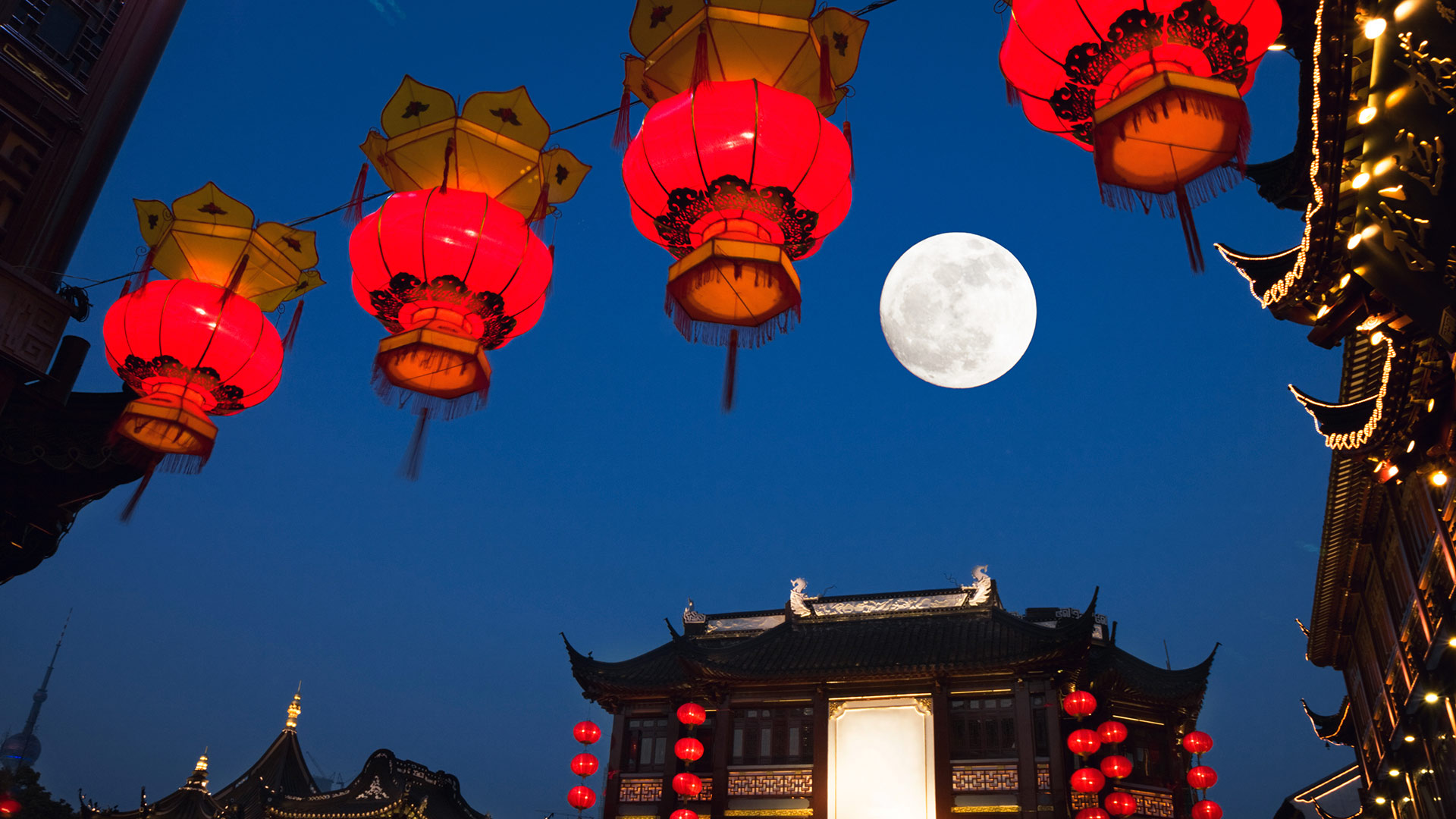
中秋之夜, 上海豫园 Shanghai Yu yuan gardens at night, mid-autumn (© Zyxeos30/Getty images)
海上生明月,天涯共此时 Full moon were reunited!
Mid-Autumn Festival
The Mid-Autumn Festival, also known as the Moon Festival or Mooncake Festival, is a traditional festival celebrated in Chinese culture. It is one of the most important holidays in Chinese culture; its popularity is on par with that of Chinese New Year. The history of the Mid-Autumn Festival dates back over 3,000 years.
Lanterns of all sizes and shapes are carried and displayed – symbolic beacons that light people's path to prosperity and good fortune. Mooncakes, a rich pastry typically filled with sweet bean, egg yolk, meat, or lotus-seed paste, are traditionally eaten during this festival. The Mid-Autumn Festival is based on the legend of Change, the Moon goddess in Chinese mythology.
中秋节
中秋节,又称中秋节或月饼节,是中国文化中的一个传统节日。这是中国文化中最重要的节日之一;它的受欢迎程度与中国新年不相上下。中秋节的历史可以追溯到3000多年前。
各种大小和形状的灯笼被携带和展示——象征性的灯塔,照亮人们通往繁荣和好运的道路。月饼是一种富含甜豆、蛋黄、肉或莲子酱的糕点,传统上在节日期间食用。中秋节是基于中国神话中月亮女神的传说。
杭州西湖的古典中国园林 Classical Chinese Garden at west lake in Hangzhou in fall (© DANNY HU/Getty Images)
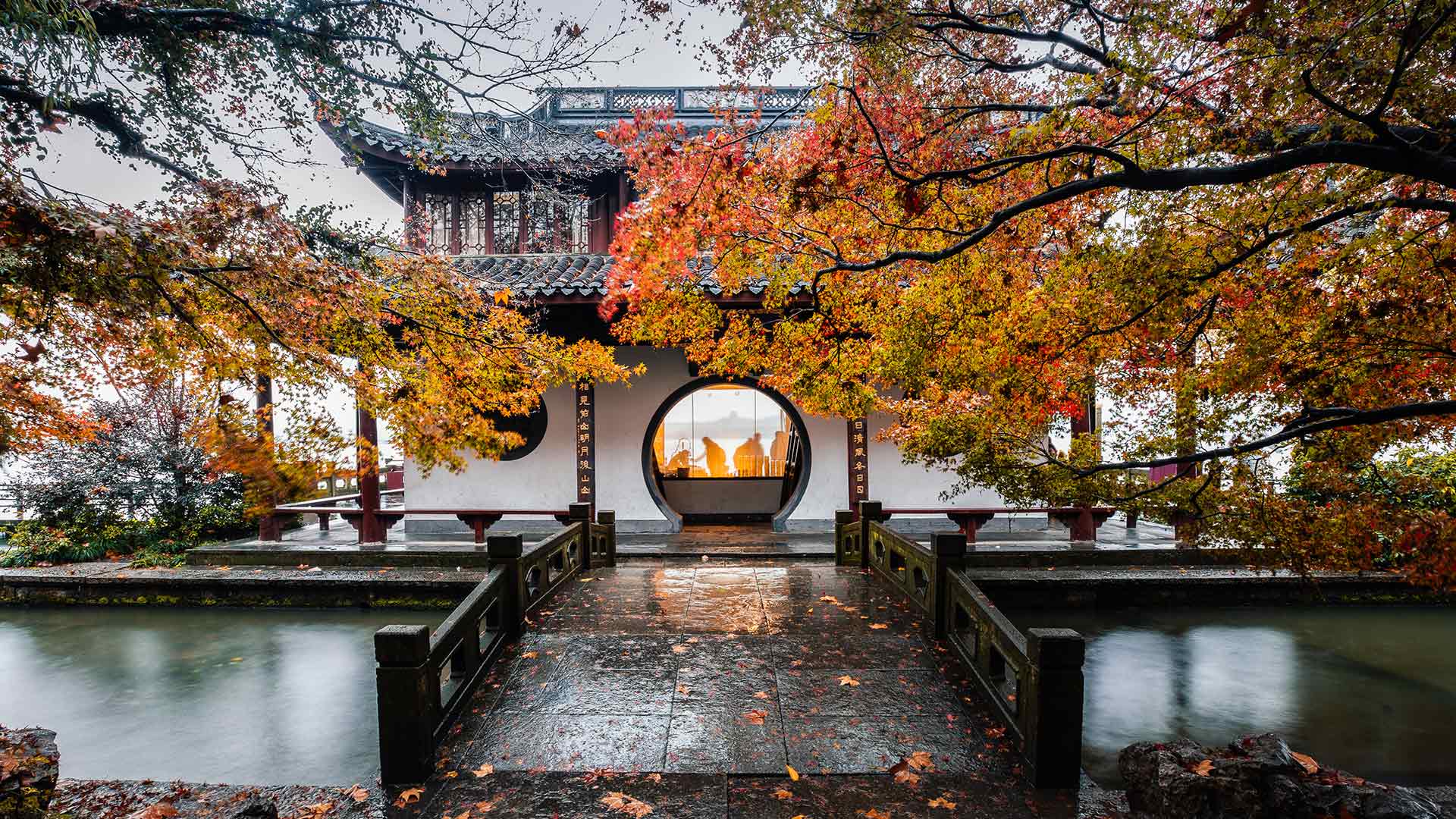
杭州西湖的古典中国园林 Classical Chinese Garden at west lake in Hangzhou in fall (© DANNY HU/Getty Images)
贴秋膘了吗? Fleshing out in autumn
The beginning of autumn
The beginning of autumn is the 13th solar term in the twenty-four solar terms and the first solar term in autumn; in nature, everything begins to grow from lush and mature to bleak and mature. The beginning of autumn does not mean the end of the hot weather. The beginning of autumn is still in the hot period, the summer has not yet come out, and the weather is still very hot during the early autumn. The so-called "hot in the three volts", there is also the saying "one volt after the autumn", there will be at least "one volt" of extremely hot weather after the beginning of autumn.
From the perspective of meteorological changes, entering autumn means that rainfall and humidity are at a turning point in the year and tend to decline or decrease. With the change of seasons, the rainfall and dry humidity in the South have obvious changes; In northern China, the obvious change is the temperature.
初秋
秋初是二十四节气中的第十三节气,也是秋季的第一节气;在自然界中,一切都开始从繁茂和成熟到暗淡和成熟。秋天的开始并不意味着炎热天气的结束。初秋仍然处于炎热时期,夏天还没有出来,初秋的天气仍然很热。所谓“热在三伏”,也有“秋后一伏”之说,初秋后至少会有“一伏”的酷热天气。
从气象变化的角度来看,进入秋季意味着一年中降雨量和湿度处于转折点,并趋于下降或减少。随着季节的变化,南方的降雨量和干湿度有明显的变化;在中国北方,最明显的变化是气温。
上海浦东森林心形洞穴鸟瞰图,中国 Aerial view of heart shaped cave in the forest, Pudong, Shanghai, China (© Yaorusheng/Getty Images)
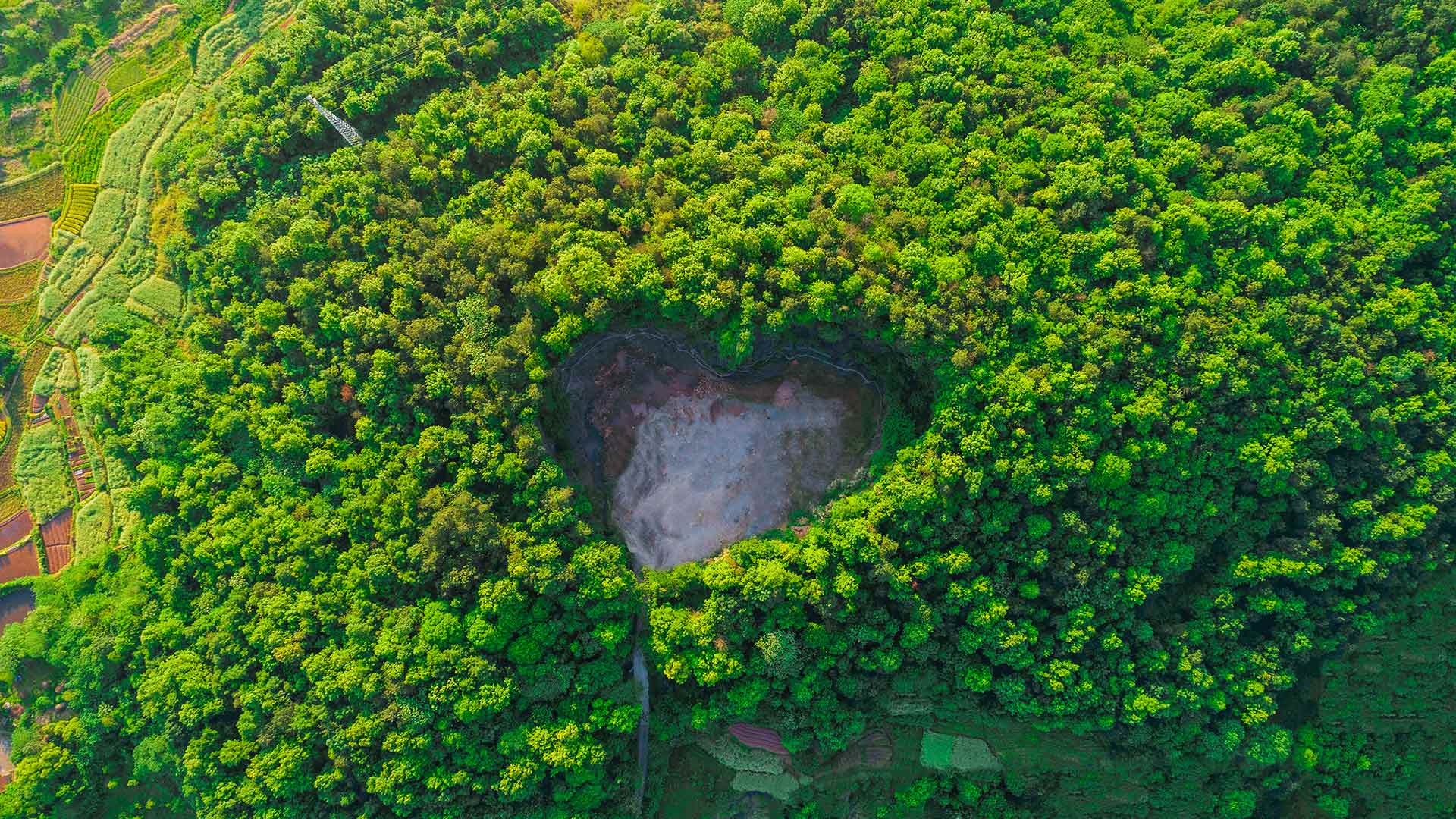
上海浦东森林心形洞穴鸟瞰图,中国 Aerial view of heart shaped cave in the forest, Pudong, Shanghai, China (© Yaorusheng/Getty Images)
最浪漫的中国传统节日 The most romantic traditional festival
QiXi Festival
Derived from the worship of stars, the Tanabata Festival is the birthday of the seventh sister in the traditional sense. The seventh sister (VEGA) is a weaver of clouds and the textile industry, and the patron saint of lovers, women, and children. The Tanabata Festival is not only a festival to worship the seventh sister, but also a festival of love. It is a comprehensive festival with women as the main body, with the folk legend of "Cowherd and Weaver Girl" as the carrier, with praying, begging, and love as the theme.
With the development of history, QiXi has been endowed with the beautiful love legend of "Cowherd and Weaver Girl". Because it is endowed with the connotation related to love, it has become a festival symbolizing love, which is considered to be a very romantic traditional festival in China and has produced the cultural meaning of "Chinese Valentine's Day" in contemporary times.
七夕节
七夕节源于对星星的崇拜,在传统意义上是七姐的生日。七姐妹(织女星)是云和纺织业的编织者,是情人、妇女和儿童的守护神。七夕节不仅是祭拜七姐的节日,也是爱的节日。这是一个以妇女为主体,以民间传说“牛郎织女”为载体,以祈祷、乞讨、爱情为主题的综合性节日。
随着历史的发展,七夕被赋予了“牛郎织女”的美丽爱情传说。由于它被赋予了与爱相关的内涵,它已成为象征爱的节日,在中国被认为是一个非常浪漫的传统节日,并在当代产生了“中国情人节”的文化意义。